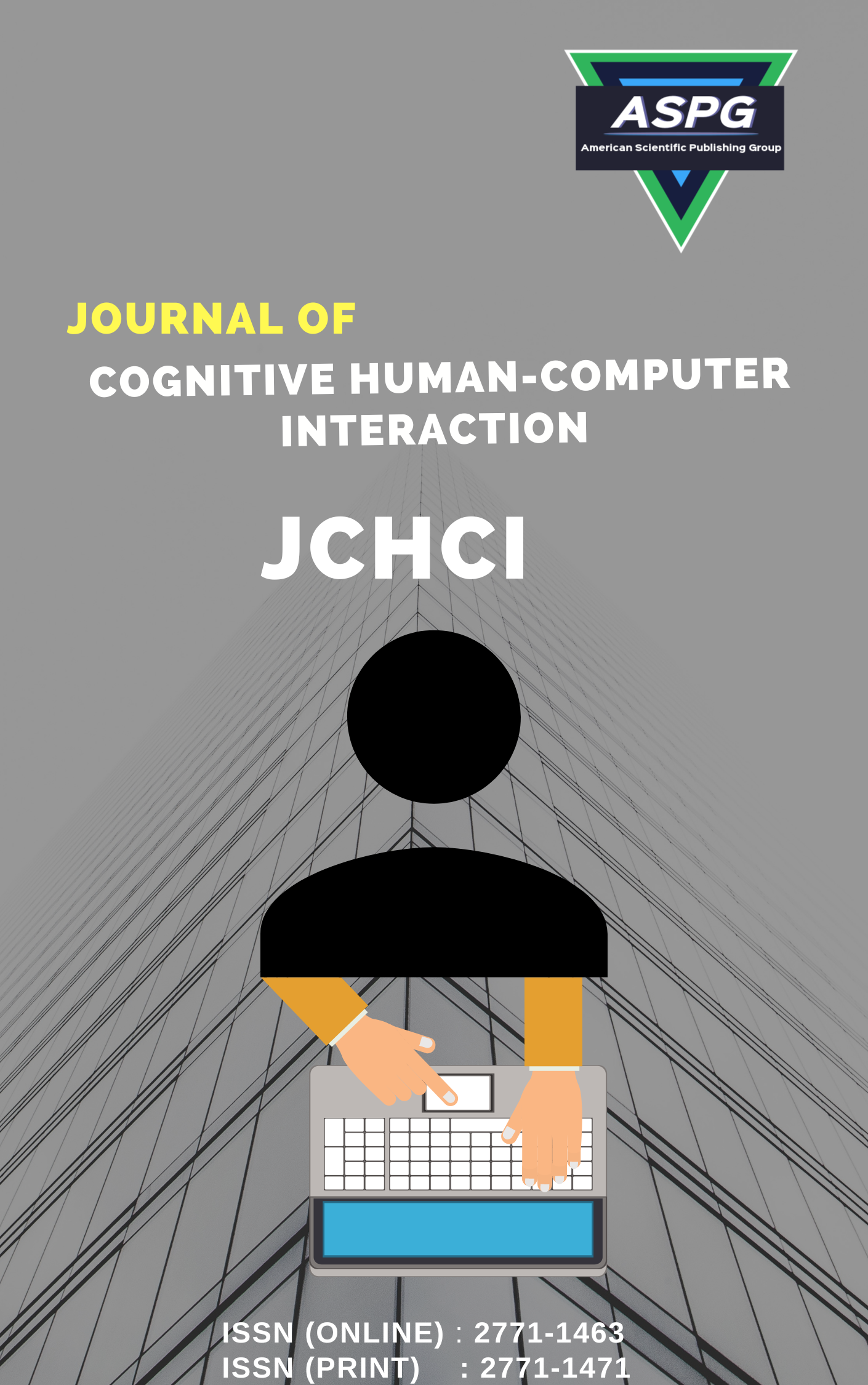

Volume 10 , Issue 1 , PP: 56-66, 2025 | Cite this article as | XML | Html | PDF | Full Length Article
Naheem M. R. 1 * , Adithya V. 2 , Dhanush H. S. 3 , Harsh Vishwakarma 4
Doi: https://doi.org/10.54216/JCHCI.100106
Neuroengineering Informatics (NEI) is an interdisciplinary field combining neuroscience, engineering, data science, and informatics to understand and control neural systems. It leverages advanced technologies like brain-computer interfaces (BCIs), neuroimaging, and artificial intelligence (AI) to decode brain function and drive clinical breakthroughs. BCIs enable direct communication between the brain and devices, aiding individuals with neurological conditions, while neuroimaging methods such as fMRI, EEG, and MEG generate vast data used to uncover neural patterns linked to cognition, emotion, and disease. AI, particularly deep learning, enhances data analysis, enabling disease prediction, personalized treatment, and decision- making insights. NEI also employs neuroinformatics platforms for data sharing and collaboration, advancing innovations like adaptive neuroprosthetics and brain stimulation techniques such as TMS and DBS to treat conditions like epilepsy, Parkinson’s, and depression. Computational neuroscience contributes further by modeling brain functions to explore learning, memory, and decision-making mechanisms. Despite challenges like integrating diverse datasets and ethical concerns around privacy and fair ness, advancements in cloud computing and parallel processing are addressing these issues, accelerating discoveries while ensuring responsible innovation. NEI’s transformative applications ex tend beyond healthcare to rehabilitation, cognitive enhancement, and human-machine integration, reshaping our understanding and interaction with the brain.
Neuroengineering Informatics , Brain-computer interfaces , Artificial intelligence , Neuroprosthetics
[1] Y. Zhang, X. Zhao, and L. Wang, "Asynchronous brain-computer interface based on alpha rhythm and SSVEP," IEEE Transactions on Biomedical Engineering, vol. 67, no. 4, pp. 1050–1060, 2020.
[2] J. Lian, H. Chen, and M. Liu, "Skill-based brain-computer interface for continuous control," Journal of Neural Engineering, vol. 18, no. 2, Art. no. 025003, 2021.
[3] Y. Liu, Z. Zhang, and T. Wang, "FoCCA: A novel method for SSVEP-based BCI systems using decentralized weights," IEEE Access, vol. 8, pp. 123456–123465, 2020.
[4] H. Chen, Y. Zhang, and J. Wang, "Combining spectral identification analysis and independent component analysis for artifact removal in EEG," Medical & Biological Engineering & Computing, vol. 58, no. 6, pp. 1265–1275, 2020.
[5] L. Wang, Y. Liu, and X. Zhang, "EEG-based methods for early-stage vascular dementia detection using machine learning," Journal of Alzheimer’s Disease, vol. 75, no. 1, pp. 123–135, 2020.
[6] M. Sadik, R. A. M. Ali, and A. M. El-Bakry, "Empirical wavelet transform for classification of motor EEG signals," Neurocomputing, vol. 315, pp. 100–110, 2018.
[7] X. Shen, T. Liu, and Y. Zhang, "Multi-room sleep stage classification using LSTM networks from ECG signals," Journal of Biomedical Informatics, vol. 93, pp. 103–112, 2019.
[8] K. Lai, Y. Chen, and J. Li, "Analysis of sleep bruxism using integrated bio signal analysis," Sleep Medicine Reviews, vol. 45, pp. 1–10, 2019.
[9] Y. Yang, Y. Li, and H. Zhang, "Blockchain-based secure neuroinformatics application architecture," IEEE Transactions on Information Technology in Biomedicine, vol. 23, no. 5, pp. 1234–1245, 2019.
[10] X. Tian, H. Wang, and J. Liu, "Maximum Frequency Information for EEG correlation generation," Journal of Neuroscience Methods, vol. 320, pp. 12–20, 2019.
[11] X. Xinxiong, Y. Zhang, and L. Wang, "A functional MRI-based social network model for predicting user preferences," IEEE Transactions on Neural Systems and Rehabilitation Engineering, vol. 28, no. 3, pp. 678–687, 2020.
[12] Z. Bol, Y. Li, and X. Zhang, "ADMM-based sparse autoregressive modeling for predictive modeling," IEEE Transactions on Signal Processing, vol. 67, no. 3, pp. 567–578, 2020.
[13] A. Oralhan, M. K. C. Uysal, and T. G. G. Korkmaz, "Development of a P300 speller based on audiovisual stimuli for BCI," Journal of Neural Engineering, vol. 17, no. 4, Art. no. 046002, 2020.
[14] K. Lai, Y. Zhang, and J. Wang, "Detection of frequency oscillations in intracranial EEG for epilepsy biomarkers," IEEE Transactions on Biomedical Engineering, vol. 67, no. 11, pp. 3250–3260, 2020.
[15] A. Al-Qazzaz, P. Kumari, and M. Ali, "Wavelet transform-based denoising of EEG signals using hybrid metaheuristic algorithms," IEEE Transactions on Biomedical Engineering, vol. 67, no. 5, pp. 1230–1240, 2020.